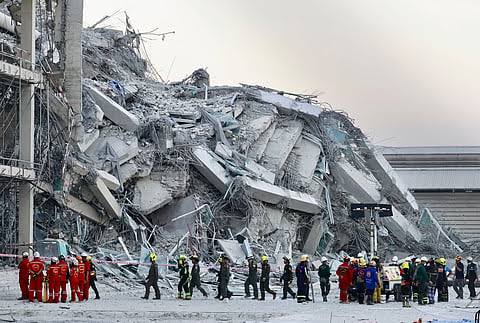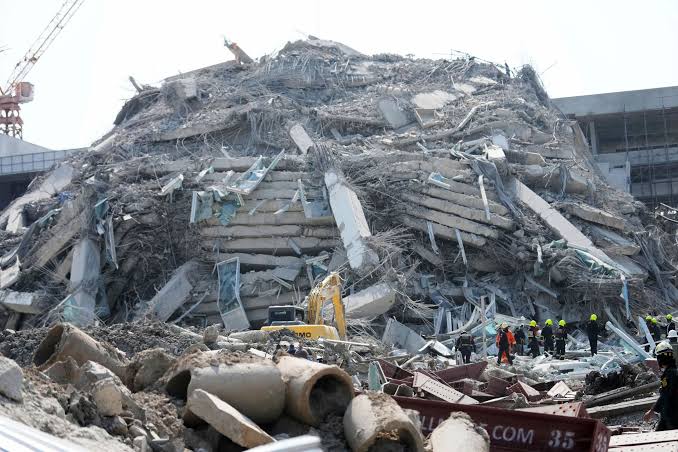A devastating earthquake shook Myanmar and neighboring Thailand on Friday, leaving behind a trail of destruction, death, and despair. The powerful tremors, measuring 7.7 in magnitude, originated near Sagaing in central Myanmar at a shallow depth, causing significant damage not only in Myanmar but also across borders in Thailand, China, India, Vietnam, and Bangladesh. The quake was followed by a 6.4-magnitude aftershock, further compounding the disaster.
 The human toll of this tragedy is heartbreaking. According to Myanmar’s state broadcaster, over 150 people have lost their lives, and hundreds more are injured. Hospitals in Myanmar’s capital, Naypyidaw, were overwhelmed, with medical officials confirming at least 20 deaths in one hospital alone. Long queues of wounded people, many covered in blood and dust, could be seen waiting for treatment outside the emergency wards. Many arrived in makeshift ambulances, carried by friends and family, while others were brought in on stretchers. Disturbing images showed the hospital’s own entrance partially collapsed, symbolizing the fragility of the infrastructure that crumbled under nature’s fury.
The human toll of this tragedy is heartbreaking. According to Myanmar’s state broadcaster, over 150 people have lost their lives, and hundreds more are injured. Hospitals in Myanmar’s capital, Naypyidaw, were overwhelmed, with medical officials confirming at least 20 deaths in one hospital alone. Long queues of wounded people, many covered in blood and dust, could be seen waiting for treatment outside the emergency wards. Many arrived in makeshift ambulances, carried by friends and family, while others were brought in on stretchers. Disturbing images showed the hospital’s own entrance partially collapsed, symbolizing the fragility of the infrastructure that crumbled under nature’s fury.
Across the border in Thailand, the destruction was equally grim. In Bangkok, a 30-storey government office building under construction collapsed when the quake struck, trapping 43 workers beneath the rubble. Emergency services rushed to the site, working tirelessly in hopes of rescuing survivors. Tragically, at least three workers were confirmed dead, while dozens more remained trapped.
The quake prompted an urgent response from governments and humanitarian agencies worldwide. Myanmar’s military junta, rarely open to international assistance, made an appeal for help and declared a state of emergency in six affected regions. Nations and organizations responded swiftly. India announced it would send around 15 tonnes of relief material on a military aircraft. The United Nations and World Health Organization activated their emergency systems, preparing trauma supplies, medicines, and essential aid to support the overwhelmed hospitals and affected population. The European Union, too, expressed its readiness to assist, while Pope Francis offered prayers for the victims and their families.
Former US President Donald Trump assured that the United States would extend help to Myanmar, stating, “We will be helping” after seeing images of flattened buildings and broken roads. His remarks echoed the global outpouring of sympathy for the people affected by this catastrophic event.
As if the initial quake was not enough, the region continued to feel the earth’s unrest, with fresh tremors of magnitude 4.2 reported late Friday night. The fear of further aftershocks looms large over terrified residents who have lost homes, loved ones, and a sense of safety.
This disaster has once again reminded the world of the unpredictable fury of nature and how, in moments like these, human lives hang in the balance. What remains now is the collective effort of the international community to provide relief, restore hope, and help Myanmar and Thailand rebuild from the rubble of this tragedy.




